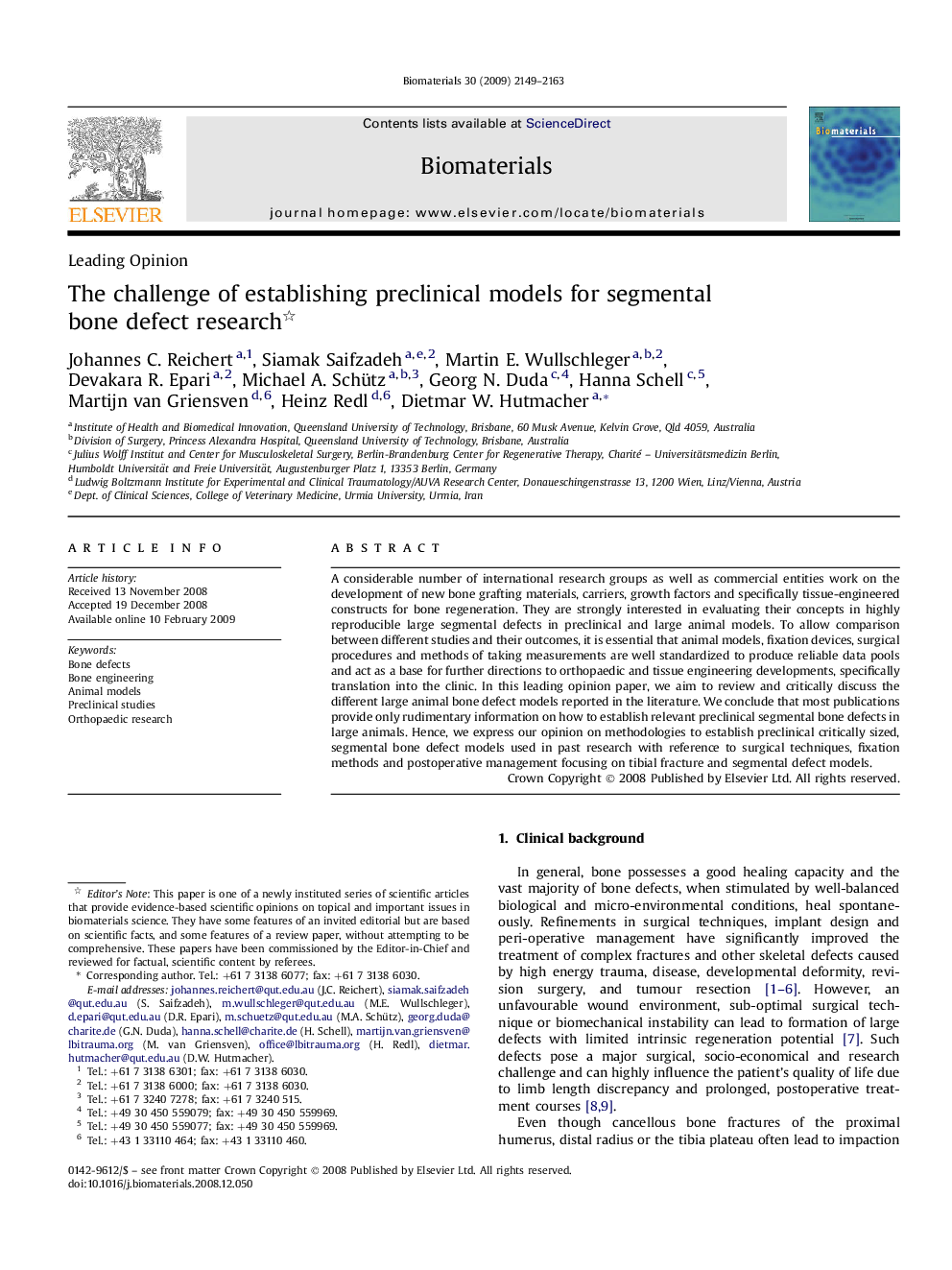| Article ID | Journal | Published Year | Pages | File Type |
|---|---|---|---|---|
| 10500 | Biomaterials | 2009 | 15 Pages |
A considerable number of international research groups as well as commercial entities work on the development of new bone grafting materials, carriers, growth factors and specifically tissue-engineered constructs for bone regeneration. They are strongly interested in evaluating their concepts in highly reproducible large segmental defects in preclinical and large animal models. To allow comparison between different studies and their outcomes, it is essential that animal models, fixation devices, surgical procedures and methods of taking measurements are well standardized to produce reliable data pools and act as a base for further directions to orthopaedic and tissue engineering developments, specifically translation into the clinic. In this leading opinion paper, we aim to review and critically discuss the different large animal bone defect models reported in the literature. We conclude that most publications provide only rudimentary information on how to establish relevant preclinical segmental bone defects in large animals. Hence, we express our opinion on methodologies to establish preclinical critically sized, segmental bone defect models used in past research with reference to surgical techniques, fixation methods and postoperative management focusing on tibial fracture and segmental defect models.
